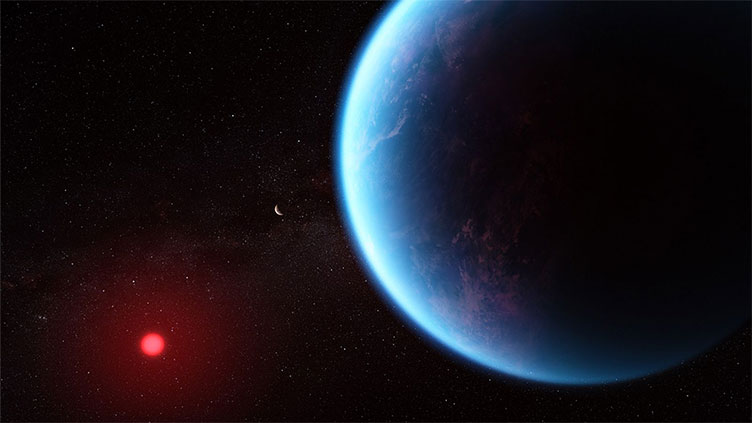Distant exoplanet K2-18 b 'could have water ocean and signs of life', scientists say

Technology
New data suggests the planet may have potentially water-covered surfaces
New data suggests the planet may have potentially water-covered surfaces, with a hydrogen-rich atmosphere
(News Desk) - NASA's James Webb Telescope has detected carbon dioxide and methane in the atmosphere of exoplanet K2-18 b, a potentially habitable world more than eight times the size of Earth.
The ground-breaking discovery has led astronomers to consider the possibility that K2-18 b may belong to a unique class of exoplanets known as "Hycean" planets, which possess hydrogen-rich atmospheres and potentially water-covered surfaces, making them potential candidates for life.
The initial insights were made possible by observations from NASA's Hubble Space Telescope.
K2-18 b orbits a cool dwarf star called K2-18, around 120 light-years away from Earth, within the constellation Leo - and sits within the habitable zone.
These exoplanets, with sizes between Earth and Neptune, are not found in our solar system, making their characteristics a subject of active debate among scientists.
The idea that K2-18 b could be a Hycean exoplanet, is particularly fascinating to scientists, with some experts believing that such planets may offer favourable conditions for life to develop.
Nikku Madhusudhan, an astronomer at the University of Cambridge and lead author of the study, said: "Our findings underscore the importance of considering diverse habitable environments in the search for life elsewhere.
"Traditionally, the search for life on exoplanets has focused primarily on smaller rocky planets, but the larger Hycean worlds are significantly more conducive to atmospheric observations."
The abundance of methane and carbon dioxide, coupled with the absence of ammonia, suggests K2-18 b features a hydrogen-rich atmosphere above a potential water ocean, scientists said.
Advertisement
Astronomers said the telescope's initial observations also hinted at the presence of dimethyl sulfide (DMS), a molecule primarily associated with microbial life such as marine phytoplankton on Earth, suggesting the possibility of biological activity on K2-18 b.
But, Mr Madhusudhan noted "more observations are needed to determine whether it is in fact DMS that we're seeing".


